One may call Bug Fables: The Everlasting Sapling a copy, but mere imitators cannot come up with a product that is this good and genuine, especially one that even surpasses the original material in some regards
Up until 2004, the year in which the release of Paper Mario: The Thousand-Year Door – the second entry of its series – took place, fans of the franchise did not have much of anything to complain about. After all, in less than half a decade, Nintendo had not only revived its main symbol’s position as a force in the RPG genre, but it had also – in the process of doing that – published two titles that were universally hailed as being among the best adventures the plumber had ever starred in; an acclaim that is not to be taken lightly considering the mascot holds the leading role in numerous of the games that went on to define the industry and drive it to unexpected grounds.
Following that glorious time, though, it is possible to say the opposite has been true, because lovers of Paper Mario have had their expectations repeatedly subverted as the property moved away from its origin. It is worthy to point out that change is by no means inherently bad, and the same applies to the act of not delivering what audiences desire; after all, neither an art form nor a medium can advance and unearth new ideas if none of those processes are carried out. But in the case of Paper Mario, evolution came with a bitter taste, for the results of the elements that were discarded and the mechanics that were brought in turned out to be experiences visibly inferior to those offered by its first two efforts.
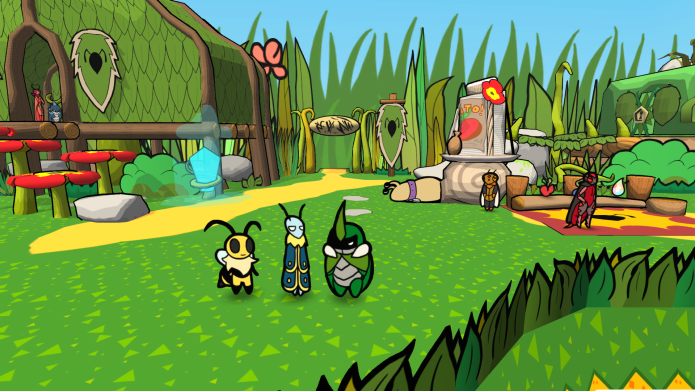
Between the arrival of Paper Mario: The Thousand-Year Door and the coming of Bug Fables: The Everlasting Sapling, fifteen years elapsed. And during that time, fans of Nintendo’s saga went through three games in which – undoubtedly – many of them bitterly wondered where the magic had gone. Super Paper Mario, Sticker Star, and Color Splash are not to be entirely discarded; although the second one has almost no redeeming features whatsoever, the other two can be fun in their own ways. However, their misguided attempts to refresh the franchise held their quality to a ceiling clearly bellow the floor from which the original pair of classics took off. And given Nintendo showed absolutely no signs of stepping back towards a tried and true formula, gamers had to question whether or not they would ever be able to experience a journey that could compare.
With the arrival of Bug Fables, those suffering souls can stop wondering and start playing, as the folks of the independent Panamanian studio Moonsprout Games, probably also tired of waiting for the series to go back to its roots, took it upon themselves to deliver what Nintendo refuses to. In Bug Fables, the Paper Mario recipe for success abandons the Mushroom Kingdom and lands on a place where bees, beetles, ants, termites, and other insects give life to a story that – even if lacking the financial backing of a giant of the gaming industry – uses a good deal of sweat and heart to easily surpass the games of that saga released between The Thousand-Year Door and itself.
Saying Bug Fables is inspired by the first two Paper Mario games is not wrong. That evaluation, however, downplays how similar it is to those titles, given both influence and inspiration often do not lead to such glaring parallels. A more accurate description would be that The Everlasting Sapling downright copies the Nintendo classics, but despite how saying so is fair to a certain point, it is also a comment that diminishes the value of what Moonsprout Games has pulled off, since mere imitators cannot come up with a product that is this good and genuine, especially one that even surpasses the original material in some regards.
Bug Fables begins when Vi (a dangerously outspoken bee) and Kabu (a noble beetle) find themselves inside the Explorers’ Association. Erected in the Ant Kingdom with the goal of finding the location of the mythical Everlasting Sapling, it is the home of brave teams that venture into the wild looking for clues and facing dangers. The newcomers plead their case to be accepted as members, but while Vi is denied due to – among other reasons – the fact bees have not been historically tied to exploration endeavors, Kabu is sent away for lacking a partner, since tasks are always carried out in groups of two. Realizing joining forces will allow them to get a permit, they pair up and – for their first mission – they get sent to nearby Snakemouth Den, where an artifact leading to the Everlasting Sapling is rumored to lie.
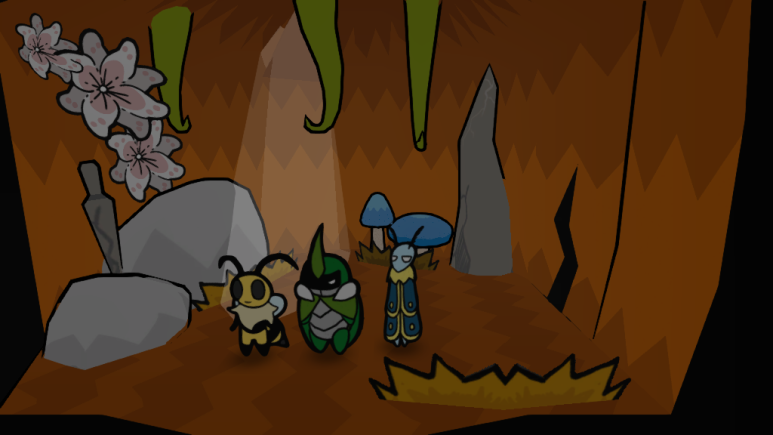
At first, not much hope is put on their shoulders; after all, the legend surrounding Snakemouth Den has caused dozens to be killed in it. As the heroes of the story, though, Vi and Kabu do not die. In fact, on their way to victory, they rescue Leif (a mysterious moth) from the clutches of death, and prove that the daunting cave did hold a precious treasure. Summoned by Queen Elizant II, they learn that the Everlasting Sapling can only be found if more artifacts are brought together, and soon the trio is on their way to where the next piece of the puzzle can be encountered.
Thanks to the similarities between Paper Mario and Bug Fables, at that point, fans of the former ought to know how it will all play out structurally. With the Ant Kingdom serving as a hub, the game is broken into chapters (seven of them) that have the heroes departing to distant locations in search of the artifacts. And, as it is the case with Nintendo’s franchise, these pieces introduce new characters, unexpected occurrences, and plot development to the package. In spite of those similarities, however, there is a slight difference in how Bug Fables approaches that framework.
In Paper Mario, what happens in the chapters tends to be completely dissociated from the main storyline, as if the hero were thrown into an alternate dimension where the troubles of the overarching script do not exist, being replaced by an entirely distinct setting and allowing Nintendo to pull off crazy stunts like a murder on a train, an odd participation in a wrestling competition, a rampage of crime perpetrated by Shy Guys, and other off-the-wall happenings. In Bug Fables, that separation is barely existent: what goes on in the chapters is frequently related to the Everlasting Sapling, the artifacts, and Bugaria – the land where the plot unfolds. As such, one could say the game advances more like a traditional RPG, with its main script – which succeeds in keeping players wondering about what will happen next – constantly moving forward and building on what has already been established.
On one hand, that means Bug Fables – though featuring its own quirks and crazy moments – does not have the wildness of a Paper Mario game. On the other, it causes Bugaria to be ridiculously rich in lore, to a point that is just not seen in the plumber’s saga. As they travel through the land, the starring explorers will learn a good deal about the history of the world; the complicated political ties and conflicts of the existing kingdoms; the differences in their social structures; and even their economic organization. These pieces of information are delivered not only by the main story itself, but also by a bunch of collectible books that can be found scattered through the map. When it comes to writing, however, the highlight has to go to the dialogues.
There is a lot of humor in Bug Fables, most of it emanating from Vi, whose big mouth and cockiness create gigantically awkward situations for all parts involved save for herself. But there is also a good load of drama as well as darkness, and those feelings plus the lore that is available will most likely push players to simply talk to everybody they see. It is a rewarding activity, and one that is incredibly abundant. Bug Fables has so much (good) writing in it that besides simply pressing a button and starting a conversation with someone, it is also possible to trigger unique talks between the party members in front of every NPC as well as in each environment that makes up Bugaria, as Vi, Kabu, and Leif will deliver comments about the character or scenario at hand. All in all, it is a delightful pile of riches that will enchant those who want to dive deeper into the world.
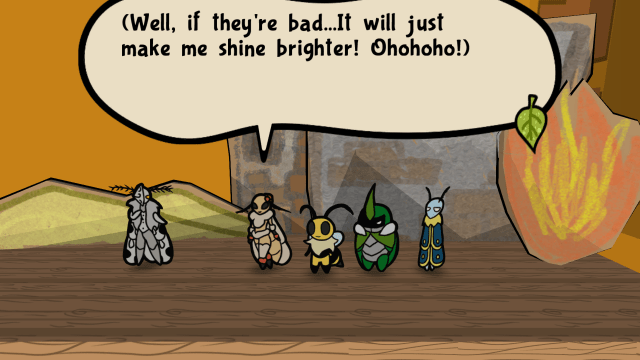
On other fronts, ties between Paper Mario and Bug Fables run equally strong – perhaps even more intensely so. In graphics, it borrows the idea of building character models and some visual assets out of paper, pairing them up with simple-looking tridimensional structures that often give the impression they were handmade. In that regard, even if the game is indeed able to put together some alluring scenarios, it is impossible not to notice a few locations – especially a couple of indoor settings – could have used the extra graphical flair brought in by a larger investment. Likewise, although beautifully drawn, visually creative, and noticeably expressive, the character models would have benefited from stretch and squash details that would have given them a more organic touch.
The musical aspect of the game is comparatively more solid, and it comes as a huge surprise how it is also able to encapsulate the spirit of Paper Mario in tunes and sound effects. Compositions like the battle music and the song that plays whilst the trio is in the Ant Kingdom town emulate their Paper Mario equivalents to a stunning degree, and when joined by the sound effects, anyone who has gone through The Thousand-Year Door and its predecessor will have a hard time determining what game is being played if they listen to it with their eyes closed. Bug Fables, though, does more than simply copying, as it succeeds in coming up with many noteworthy stylistically different tracks of its own.
A similar attitude can be seen in the title’s gameplay, which joins extreme imitation with welcome creation. The trio of explorers may not carry the partners the plumber had at his disposal in the first two Paper Mario releases; they, however, make up for it with a wide range of skills. Vi has a boomerang she can use in two ways and learns how to fly towards the second half of the adventure; Kabu can cut down grass, dig, move stones, and use his horn to clear rocks out of the way; finally, Leif can freeze drops of water or enemies into blocks of ice, create icicle-like pillars that allow the party to traverse rivers, and generate a protective shield that lets them walk on dangerous surfaces. Together, these abilities are used to bring puzzle, platforming, and exploration flavors to what happens on the field.
Bug Fables does quite a lot with the team’s tools, and it takes those gameplay aspects to a especially surprising level. The opening Snakemouth Den, for example, is heavy on moving platforms as well as employing a combination of blocks of ice and geysers to reach higher locations, and the game only builds up from there, constantly throwing traps to be overcome, gadgets to be interacted with, and riddles to be solved at players. The mixing of those elements creates dungeons that are widely entertaining.
That quality is especially maximized by how intricately Bug Fables’ scenarios are constructed. Be it in the many towns of Bugaria, in the enclosed dungeons that hide its excellent boss battles, or in the wide open settings that connect the kingdoms, players will hardly find a scenario piece that only leads to another. Consequently, Bug Fables focuses on exploration in a way that is just not too common to see in an RPG; frequently, gamers will be faced with branching paths that hold no clear indication of the one that needs to be taken, leaving it up to them to figure out the order in which those areas are meant to be explored and cleared so that the way forward is opened.
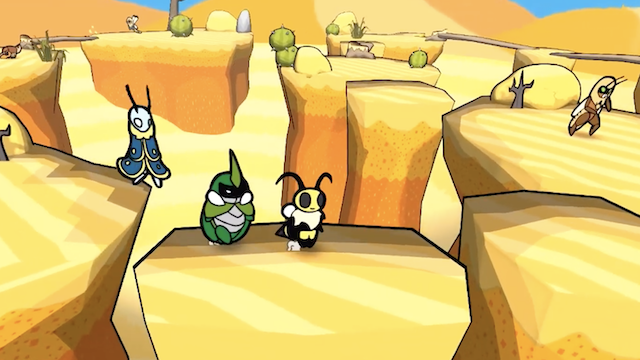
Regarding that facet of Bug Fables, the only problem that arises stems from how some particularly tight platforming sequences do not go along too well with the game’s fixed camera angles. In occasional situations, either depth perception or a good look at a platform’s position is of the utmost importance. Sadly, given each set piece is seen from a predetermined perspective, doing so is invariably impossible. Thankfully, though, those moments do not show up with enough frequency to harm the experience.
Living in the colorful, branching, and puzzling settings of Bugaria are hordes of enemies the heroes will have to deal with as they go along. And they will do so through turn-based combats that will make full use of the trio’s skills. It is worth noting that, out of all aspects Paper Mario fans have desperately missed about the classic era of the franchise, battles might as well be the biggest one, as skirmishes in the series were disfigured beyond belief into utter dullness in the three games that followed The Thousand-Year Door. If that is indeed the case, Bug Fables quenches that thirst with style, because – in both mechanics and presentation – its battles perfectly recapture that lost spirit, giving it a few added twists to boost.
In each turn, Vi, Kabu, and Leif can all pick an action among many: unleashing a basic attack with their respective main weapon; using one of numerous exclusive special skills that consume their shared Teamwork Points (TP); pulling an item out of their bag; spying on an enemy to learn more about it; changing the order of the group; letting another member of the party attack first; performing what the game calls a turn relay; or sitting around doing nothing until the next round.
Some of these actions have interesting strategic ramifications with considerable payoffs. For starters, the bug who stands in the front is more likely to be targeted but has a bonus attack point. Secondly, allowing somebody else to move first may be necessary because a few foes cannot be reached by all heroes: Vi, for instance, is the only one who can hit flying baddies; Kabu’s horn-related moves are generally limited to the unit that is in front of the rival gang; and Leif has an exclusive hold on buried threats. Consequently, sometimes it is a must to play around with the order of attack, such as when Vi smacks an airborne enemy and brings it to the ground so others can strike.
Out of all those features, though, the turn relay is certainly the most interesting. With it, one of the three bugs can opt to do nothing and send the opportunity to move to a friend. In doing so, the partner in question will be able to act twice; however, that member’s attack power will be diminished by one. Together with the ability to change the order of the party and freely choose who is moving when, that skill gives players immense control over what they can pull off strategically; a window that is very much needed for some of the bosses or mightier enemy groups.
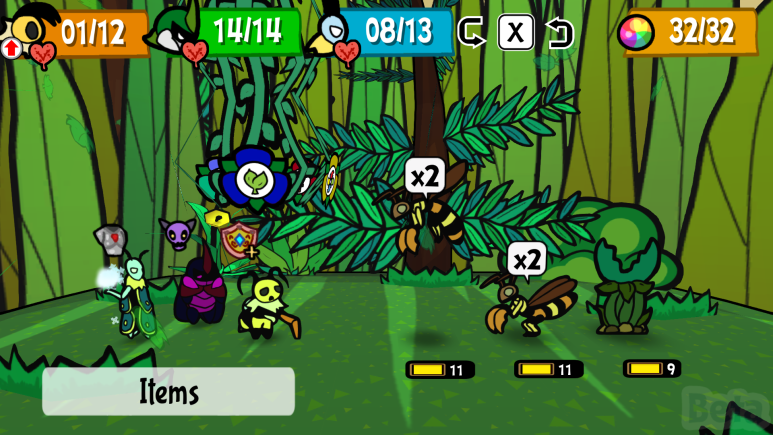
But in the case of battles, as it should be when it comes to a game heavily inspired by Paper Mario, the stars of the show are the action commands: the timely button presses that are required to successfully land attacks and defend from incoming blows. From an offensive standpoint, the variety of actions, each one depending on the move it is related to, is pretty impressive: reacting quickly when a button pops up on the screen; mashing rapidly; going through sequences of commands as they appear; and more. When it comes to defense, matters are simpler, usually relying on pressing the A button according to the timing of the attack.
In the two cases, however, getting it all – or at least most of it – right is absolutely necessary to survive some segments of the game, as the bonus hit points and defensive coat gotten from having good timing and mastering the moves can be the difference between victory and failure. More importantly, though, is the fact that being required to react to every move that happens transforms the turn-based battles into far more interactive, fun, and accessible affairs than they usually are.
Supporting the combats, there is a layer of simple RPG traits that ought to be quite familiar to Paper Mario fans. Upon gaining a level, players can choose between extra HP, additional TP, and improved MP. That last one is related to the medals, which work exactly like the ones in the plumber’s classic adventures. They are collectible items obtained in various ways that can then be equipped (hence spending MP) to bring a wide array of bonuses to the party, such as immunity to paralysis, extra defense to the bug standing on the back, a poisonous coat to Vi’s needles, and more. Needless to say, the nigh infinite combinations of skills that can be extracted from them add great flexibility to how one can approach the building of their team. Furthermore, in addition to buying items from shops, gamers can explore wild recipes that can either fail massively or generate extra powerful items that are registered on a handy cookbook.
At last, and on a move that brings positive separation between it and its biggest inspiration, Bug Fables is notable for the amount of extra content it boasts, which can extend a twenty-hour adventure into the thirty-hour threshold with ease. The game has dozens of varied extra sidequests, including a few mighty optional bosses, that give players a deeper look into major and minor characters as well as entirely optional parts of the overworld. Similarly, it carries a vast list of collectibles, such as the aforementioned recipes, medals, and lore books, as well as crystal berries, a bestiary, a list of discoveries, and a pile of achievements.
To top it all off, and as special gifts to those looking for extra challenge, Bug Fables, which is decently challenging on its standard setting, also has a boss rush; a cave of trials where mighty enemy waves are faced; and a hard mode that can be turned on and off at any time during the quest starting from its earliest minutes.
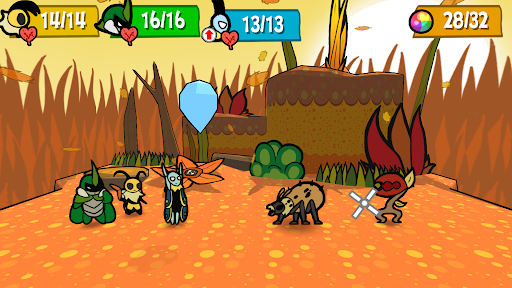
By looking closely at Bug Fables, one can notice that there are punctual cracks on its surface that reveal its nature as an independent effort that is tackling a rather large scope. But other than being justified, given it is actively trying to emulate a gameplay experience of a rather large caliber, its ambition is also greatly fruitful, because it undeniably yields a product whose quality matches – and in some areas even surpasses – that of the material that inspired it: the first two Paper Mario games.
In some ways, Bug Fables does not feel like a copy that is too close for comfort or even a homage. The end result is far closer, instead, to a continuation of what was left behind fifteen years before its release, because although it obviously exhibits neither the firepower nor the creative wildness a direct sequel to The Thousand-Year Door would have, it dares to build on what was standing nevertheless. And what fans get is not a mere nod of recognition to a past that is lost, but a picking up of the torch that proves the fire still burns and that it can become even stronger.

I’d never heard of this ever. And now I need to own it and play it. Merci!
De rien!
It’s a great one. I hadn’t heard about it either until a little while ago when a friend from WordPress (themancalledscott from the Wizard Dojo, to be exact) told me about it. I bought it as soon as I could.
Proper belting, that is! Yeah. I’ll be trying that out and then pretending it was just ME and my cultural excellence that knew about it. Bwahahaha!
Given your cultural excellence, nobody will doubt that claim! It’s a perfect plan.
Bwaahahahaha! MWahahaaha!!! Today is an evil genius day for me, clearly.